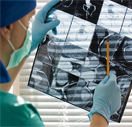Voiding Disturbances in Recurrent Urinary Tract Infections
László SZABÓ1,5,6, I. BAJUSZ1, K. LOSONCZI1,
B. LOMBAY2,5, E. BORBÁS2, A. ANGYAL3, Gy. RÉTI4
1Department of Nephrology, Hypertension and Urodynamics, Borsod County University Hospital, Miskolc, Hungary
2Department of Diagnostic Imaging, Borsod County University Hospital, Miskolc, Hungary
3Department of Rehabilitation, Borsod County University Hospital, Miskolc, Hungary
4Department of Surgery, Child Health Center, Miskolc, Hungary
5Institute Of Health Science, University of Miskolc, Miskolc, Hungary
6Postgraduate Institute of Child Health, Institute University of Debrecen, Miskolc, Hungary
Background: To reveal the function and morphological anomalies
together are very important and the videourodynamics (VUD) combined
with conventional voiding cystourethrography (VCUG) with
cystomanometry seemed to be the most appropriate method.
Materials and methods: During a 17-year study period 810 children
had pyelonephritis, and 50,440 urine cultures were measured.
Gram negative bacterium was found in 16,800 samples, and E. coli
in 11,032 samples (66%). 448 children with recurrent urinary tract
infections prospectively underwent videourodynamic (VUD) to further
define their urinary tract abnormalities. 184 infants were under
1 year of age (Group I), 172 children between 1 and 6 years (Group
II), 92 patients were between 7 and 12 years (Group III). All children
had history, clinical examination, urine analysis and culture;
serum creatinine examination; and ultrasonography before VUD.
Measurement of CM was registered onto a computer and VUR was
documented with plain films and later in a PACS system. The first
choice of treatment was 3rd generation cephalosporin antibiotics.
Results: The VUD diagnosis was of normal bladder function in 72
(16%) children (Group I: 22, Group II: 31, Group III: 19), vesicoureteric
reflux (VUR) alone in 198 (44%) (Group I: 93, Group II: 59,
Group III: 56), VUR and unstable bladder dysfunction in 101 (23%)
(Group I: 39, Group II: 48, Group III: 14), and unstable bladder dysfunction
alone in 77 (17%) (Group I: 30, Group II: 34, Group III: 13).
Conclusion: Only 33% of the urine culture showed Gram negative
bacteria, but 66% of them were E. coli. VUD is a useful technique
for a complex investigation of the lower urinary tract function and
X-Ray morphology. The advantage of these studies is that they
combine the objectivity of urodynamics with the visual radiographic
image which having lower radiation doses, and making for a far
more logical interpretation of the results.




